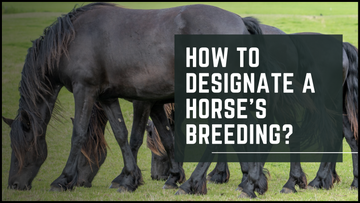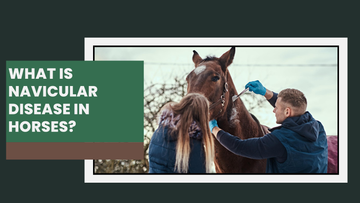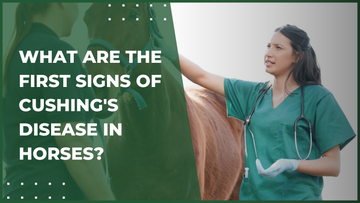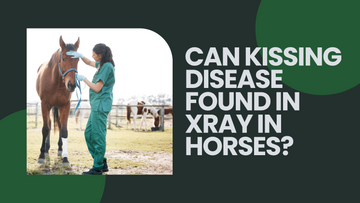If you're stepping into the world of horse breeding, it's important to know that it can be complex—but incredibly rewarding. One of the first things you'll want to understand is how to designate a horse's breeding. That means figuring out where your horse comes from, who their parents are, and what that all means for their future.
It’s not just paperwork or a fancy pedigree display. It’s the foundation of smart, thoughtful breeding. And in this guide, we’re going to break it all down in plain English—no vet degree required.
What Do "Dam" and "Sire" Mean?
Let’s get the basics out of the way. You’re going to hear the terms dam and sire a lot in horse circles.
-
Sire: This is the father horse. He's the stallion who contributed half of the foal’s DNA. People often associate him with traits like speed, strength, or stamina.
-
Dam: The dam is the mother horse. She not only contributes the other half of the foal’s genes but also plays a big role in its early development, temperament, and physical soundness.
Understanding this duo is the first step in designating a horse’s breeding. It’s like figuring out who mom and dad are on a horse’s family tree, and how their qualities could show up in the foal.
Bloodlines and Pedigree: Why They Matter More Than You Think?
Alright, so you’ve got your dam and sire. But how do you know if they’re a good match? This is where horse bloodlines come into play.
Bloodlines are essentially a horse's family history—racing achievements, conformation traits, temperament patterns, and even color tendencies passed down through generations. Breeders look at these lines to predict how the foal might perform or behave.
And when you map those bloodlines over several generations? That’s called a horse pedigree.
Pedigrees are goldmines of information. They help breeders avoid genetic red flags and increase the odds of producing a foal that excels—whether that's on the racetrack, in the show ring, or as a reliable working partner.
| Horse Name | Sire | Dam | Traits Passed Down |
| Silver Thunder | Bold Runner | Grace in Gold | Speed, Endurance, Temperament |
| Meadow Dancer | Echo Jet | Velvet Moon | Agility, Trainability, Style |
Types of Horse Breeding: Old-School and Modern Techniques

Not all breeding happens the same way. Depending on your resources and goals, you might go with traditional methods or tap into high-end horse breeding techniques.
1. Natural Horse Breeding:
This is exactly what it sounds like—stallion meets mare. It’s the most straightforward method, and it’s still widely used, especially on farms where the horses live nearby.
2. Artificial Insemination (AI) For Horses:
With AI, the sire’s semen is collected and shipped to the dam’s location. This allows you to breed across the globe and gives access to top-tier stallions without moving the mare (or risking injury during natural cover). It also lets you preserve valuable bloodlines more efficiently.
3. Embryo Transfer:
This one’s pretty fancy. The embryo is taken from a genetically valuable mare and implanted into a surrogate. The surrogate carries the foal, allowing the prized mare to continue training or produce more embryos in the same season. High-tech? Yes. But for elite breeding programs, it’s becoming more and more common.
Making Sense of the Horse Family Tree
When you're planning to breed—or even just trying to understand a horse’s background—it helps to lay it all out in a horse breeding chart. Think of it like a family tree, only instead of Aunt Carol, you’ve got Champion Runners and Derby winners.
And here’s where it gets fun—you start to notice trends. Maybe every horse from a certain dam line is known for excellent jumping ability, or every foal sired by a particular stallion has a calm, willing temperament. That’s where the magic happens.
The Color Cross Chart: Yes, Coat Color Is Predictable

Some breeders are very particular about coat color (and hey, we don’t blame them—who doesn't love a striking buckskin or blue roan?). Luckily, there’s a handy tool called the color cross chart for horses that helps predict possible coat colors based on the dam and sire’s genes.
| Sire Color | Dam Color | Possible Foal Colors |
| Bay | Chestnut | Bay, Chestnut, Black |
| Palomino | Grey | Palomino, Grey, Buckskin |
| Black | Black | Black, Smoky Black, Dark Bay |
Focus on health, temperament, and conformation first. A pretty coat won't mean much if the foal has structural or behavioral issues.
A Quick-Specs Summary
Here’s a quick hit-list of what to track when designating a horse’s breeding:
>> Sire name & line
>> Dam name & line
>> Known traits in the pedigree
> > Generational performance records
>> Coat color genetics (if relevant)
Conclusion:
Designating a horse’s breeding involves understanding lineage, keeping accurate pedigree records, and choosing the right sire and dam. Health screenings and adherence to breed standards are crucial for responsible breeding. With careful planning, you can improve genetic traits and support the long-term welfare of your horses.
Visit The Epic Animal—your go-to source for high-quality horse tack wholesale. We proudly offer a curated selection of equine essentials to support breeders and trainers alike.
FAQs:
Q: When is breeding season for horses?
Most mares naturally go into heat during the spring and summer months, so horse breeding season typically runs from February to June in the Northern Hemisphere. That’s when horses are most fertile.
Q: How many different horse breeds are there?
There are over 350 recognized horse breeds worldwide! From the speedy Arabian to the sturdy Shire, each breed has its own unique horse genealogy and characteristics.
Q: What are the largest breeds of horses?
The largest horse breeds are typically draft horses—think strong, steady giants. The Shire, Clydesdale, Percheron, and Belgian all rank among the biggest.
Q: How do I identify horse breeds?
Start by looking at physical traits—size, body shape, head profile, and color. But here’s the catch: two horses might look similar but come from totally different horse bloodlines.
Q: What are the most popular horse breeds?
Globally, the Thoroughbred, Quarter Horse, Arabian, and Warmbloods are all crowd favorites. Each of these has deep thoroughbred horse bloodlines or sport horse pedigrees.
Read More Blogs:









